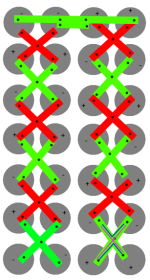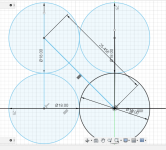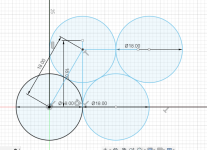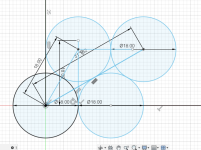darthpaul93
1 µW
- Joined
- Feb 16, 2021
- Messages
- 1
I’m thinking of having a go at building up a battery pack. Something to do until lockdown is lifted! Pretty much decided on 21700 cells for a 14s2p pack to go in a saddle bag. Obviously easiest deign is 14 cells long 2 cells high when looking at the cell ends, but that’s too long for the bag. So I want to split it and essentially fold it on itself so it will be 7 long 4 high. But then how do I connect the series connection together that is now split? Two thoughts were double up the nickel strips across the two parallel connections that are now side by side or something like a 12 gauge wire to connect the two parallel strips together?
Any ideas or suggestions are appreciated.
Any ideas or suggestions are appreciated.







